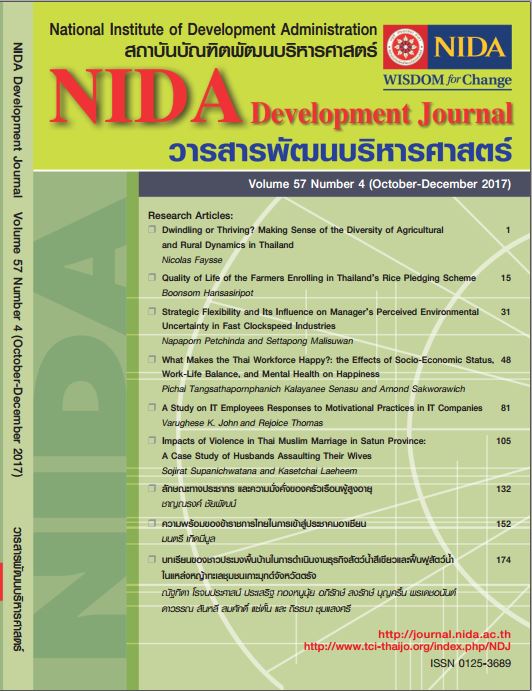What Makes the Thai Workforce Happy?: the Effects of Socio-Economic Status, Work-Life Balance, and Mental Health on Happiness
Main Article Content
Abstract
The objectives of this study were to examine the factors affecting the happiness of the Thai workforce and to investigate the relationships among
happiness and socioeconomic status (SES), work-life balance (WLB), mental health (MH), family satisfaction (FS), and community satisfaction (CS). Happiness consists of three main components: life satisfaction, positive affect, and negative affect. MH is comprised of two components, which are mental capacity (coping ability) and mental quality (kindness and altruism). SES is a composite indicator of education and income. The secondary data used in this research were obtained from the National Statistics Offce of Thailand. The samples were 8,585 voluntary respondents aged 15 years and over. The data were analyzed using structural equation modeling (SEM) with AMOS version 23 in order to examine the relationships among the factors affecting happiness. The fndings revealed that happiness was signifcantly correlated with SES, MH, FS, WLB, and CS at .32, .31, .22, .14 and .08, respectively. The total effects of SES, MH, FS, WLB, and CS on happiness were .35, .306, .316, .165, and .216.
The results also suggested that SES, MH, and FS were highly correlated with the happiness of the Thai workforce while WLB and CS had rather low correlations with happiness. Mental health, comprised of coping ability, kindness, and altruism, played an important role as a partial mediator between happiness and all affecting factors. There was a high statistically signifcant relationship between FS and CS with a covariance of 0.34. Moreover, the developed SEM model of happiness was proved to be able to predict happiness at an acceptable level of 40% (R2 = 0.4).

